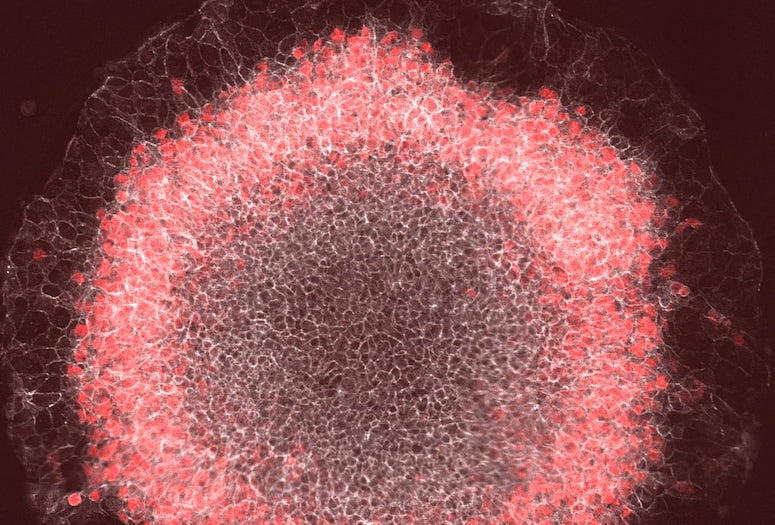HOUSTON – (Dec. 7, 2021) – You were old enough to make decisions when you were no more than a small collection of cells. Now, Rice University scientists are studying how those earliest decisions are made to better understand our own development.
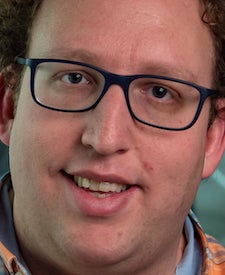
The Rice lab of Aryeh Warmflash, an associate professor of biosciences and bioengineering, has won a $1.2 million National Science Foundation grant to track down details of how cells collect and interpret the signals they receive from their neighbors as they decide their fates.
Warmflash studies the complex process of differentiation, by which stem cells decide whether to become skin, bone or organs in a developing embryo. “How this occurs is one of the most fundamental questions in biology and is key to understanding our own origins as well as the diverse forms of life on Earth,” according to the grant abstract.
The lab has made a series of discoveries on the bigger (but still small) process of gastrulation, during which the cells of the embryo form multiple layers and begin to make their first decisions. The process is influenced by a complex array of changing signals in the cells' environment, and understanding how these signals influence the decision process on the single-cell level is a greater challenge.
"Understanding this process requires new types of quantitative experiments in which we measure the dynamics of signaling and cell fate in individual cells, together with novel mathematical frameworks to make sense of this complexity,” Warmflash said.
That will involve live cell imaging of stem cells that have been genetically modified with fluorescent reporters and a mathematical framework known as catastrophe theory to investigate how cells coordinate specialization by secreting proteins that influence their neighbors.
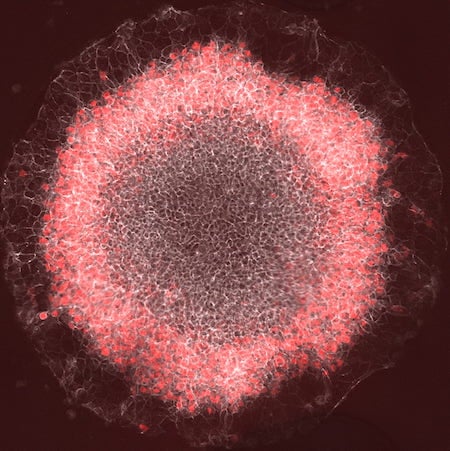
During gastrulation, a cascade of three distinct signaling pathways known as BMP, Wnt and Nodal activates the process. The Warmflash lab has discovered that these signaling activities sweep through the colony in waves, with each wave triggering the next as the layers form, but the dynamic process by which the individual cells within interpret the complex signals is still a mystery.
“We plan to characterize and model how BMP induces Wnt and then how Wnt induces Nodal, and how cell fate is a function of the dynamics of these multiple signals,” Warmflash said. He expects the model will detail a Waddington epigenetic landscape that envisions a differentiating cell as a ball rolling down a hill to find its most stable fate, similar to the model used to study how proteins fold.
He hopes the results will reveal the mechanisms behind cells’ decisions, as well as a method to predict signaling dynamics. That could ultimately improve researchers’ ability to direct stem cells to a given fate.
“Ultimately, this research should give us fundamental insight into the decisions made by cells at the earliest stages of shaping our body plans, as well as provide key information for making the same cell types in the lab for use in regenerative medicine,” Warmflash said.
Images for download:
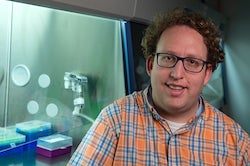
https://news-network.rice.edu/news/files/2021/12/1213_CELL-1-WEB.jpg
CAPTION: Aryeh Warmflash. (Credit: Jeff Fitlow/Rice University)
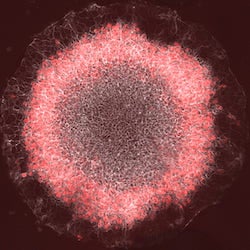
https://news-network.rice.edu/news/files/2021/12/1213_CELL-2-WEB.jpeg
A ring of red cells representing the mesoderm germ layer appear in a stem-cell gastrulation model developed by the Rice University lab of bioscientist Aryeh Warmflash. The lab has received National Science Foundation backing to model how individual embryonic cells process the signals that prompt them to differentiate. (Credit: Warmflash Lab/Rice University)
Located on a 300-acre forested campus in Houston, Rice University is consistently ranked among the nation’s top 20 universities by U.S. News & World Report. Rice has highly respected schools of Architecture, Business, Continuing Studies, Engineering, Humanities, Music, Natural Sciences and Social Sciences and is home to the Baker Institute for Public Policy. With 4,052 undergraduates and 3,484 graduate students, Rice’s undergraduate student-to-faculty ratio is just under 6-to-1. Its residential college system builds close-knit communities and lifelong friendships, just one reason why Rice is ranked No. 1 for lots of race/class interaction and No. 1 for quality of life by the Princeton Review. Rice is also rated as a best value among private universities by Kiplinger’s Personal Finance.

